General Terms
|
Atari |
|
Bamboo Joint |
|
Cut |
|
Double-Ko |
|
Geta |
|
Gote |
|
|
Guzumi |
|
Hanami-Ko |
|
Hane |
|
Hanezeki |
|
Hanezeki's Tail |
|
Hasami-Tsuke |
|
Hiki |
|
Jigo |
|
|
Kikashi |
|
Ko |
|
Me ari me nashi |
|
Miai |
|
Nakade |
|
Nozoki |
|
Oiotoshi |
|
Oki |
|
Peep |
|
|
Sagari |
|
Seki |
|
Semeai | |
|
Sente | |
|
Tenuki | |
|
Tesuji |
|
|
Throw-in |
|
Triple-Ko |
|
Tsuke |
Igo Hatsuyōron 120
|
Capture Variation |
|
Circular Hanezeki We call this very special position "Circular Hanezeki". The "usual" hanezeki in the lower right corner (with |
|
Crosscut Sequence |
|
Hanezeki Exchange With the classical solution, it is necessary to play this exchange early in the game, because - without the second throw-in |
|
Hasami-Tsuke Sequence However, the hasami-tsuke of |
|
Joachim's Ko-Semeai This ko-semeai is preceded by the hiki of |
|
Nakade Sequence With Joachim's Ko-Semeai, we often refer to the first three move-pairs of this sequence, which generate potential ko-threats for Black that White is forced to answer in any case. |
|
Punishment Semeai |
|
Punishment Semeai Liberty Level In the main line of our solution, the Punishment Semeai Liberty Level is seven. White is unable to capture both the hanezeki's tail |
|
Semeai Variation |
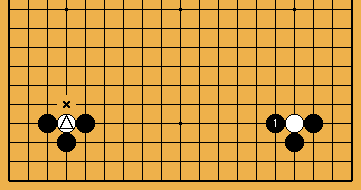
 ), which has only one liberty (
), which has only one liberty ( ; and could be captured by the next move). Very often used for the move itself - which takes the last but one liberty (
; and could be captured by the next move). Very often used for the move itself - which takes the last but one liberty ( ).
).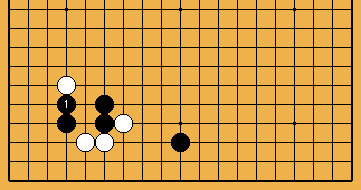
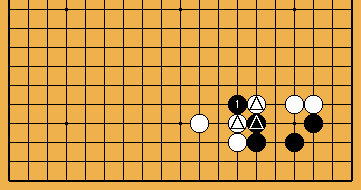
 ) in conjunction with an own, diagonal adjacent, stone (
) in conjunction with an own, diagonal adjacent, stone (
 /
/  /
/  ). Can become a large supply of ko-threats (here for Black), if another ko on the board arises.
). Can become a large supply of ko-threats (here for Black), if another ko on the board arises.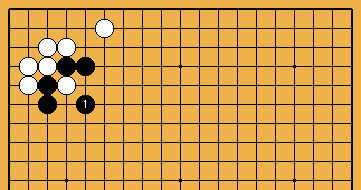
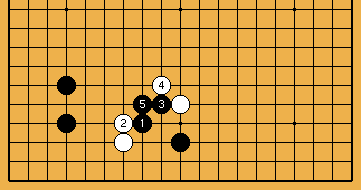
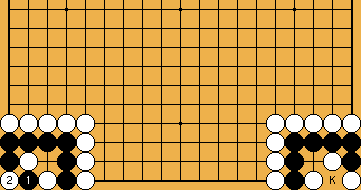
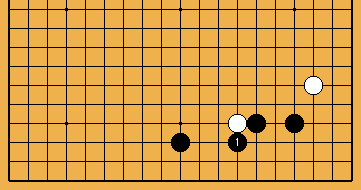
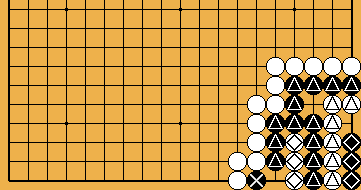

 ), in which each side has a chain in atari (
), in which each side has a chain in atari (
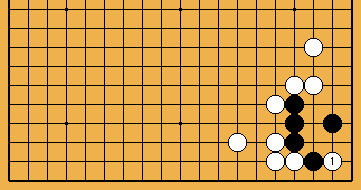
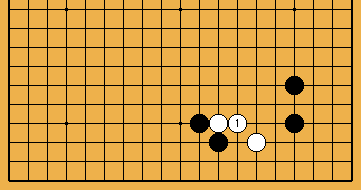
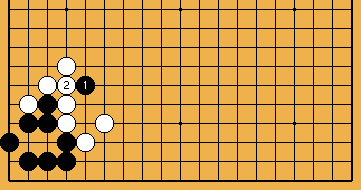
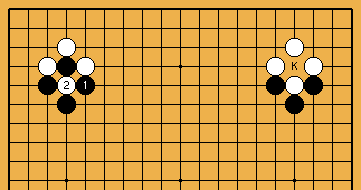
 ) that has just captured a single stone at the prohibited point (
) that has just captured a single stone at the prohibited point ( ).
).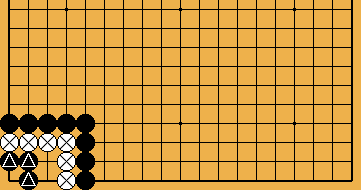

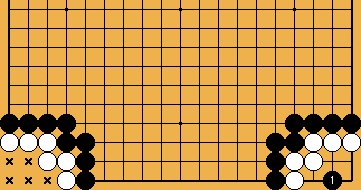
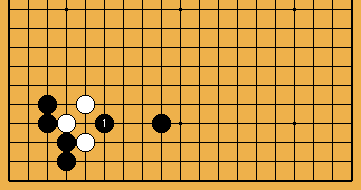
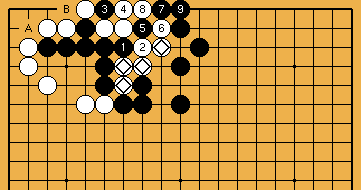
 -stones with three liberties, White must connect at four points,
-stones with three liberties, White must connect at four points,  ,
,  , and
, and  .
.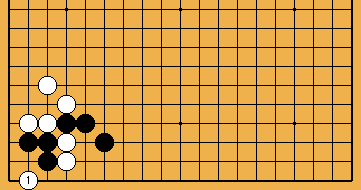
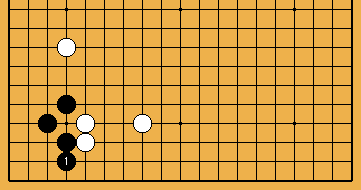
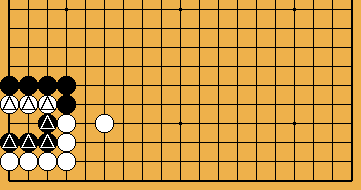
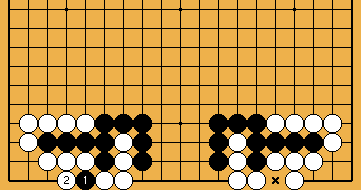
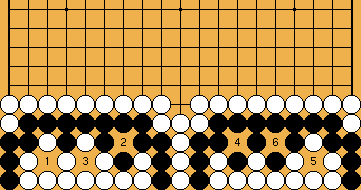
 , if neither side gives way, we reach a repetition of the original position. Under Japanese, and Korean, rules, the game ends with "no result".
, if neither side gives way, we reach a repetition of the original position. Under Japanese, and Korean, rules, the game ends with "no result".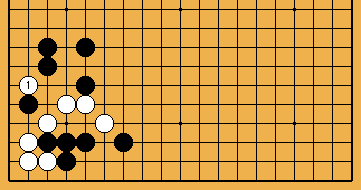

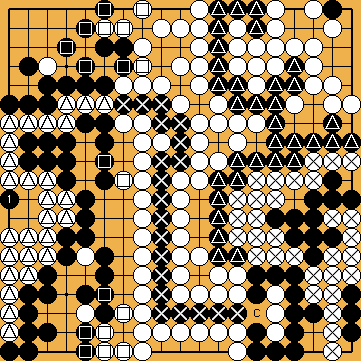
 /
/ ) on the left side - White captures the
) on the left side - White captures the  . Both
. Both 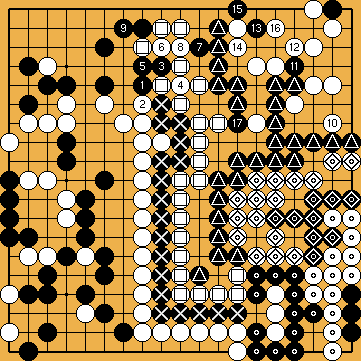
 ,
,  ,
,  ,
,  , and
, and 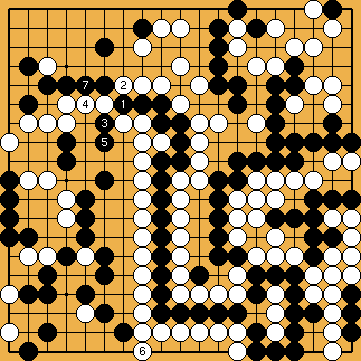
 the "Crosscut Sequence". The Black, and White, groups in the centre, and on the left side, are separated now.
the "Crosscut Sequence". The Black, and White, groups in the centre, and on the left side, are separated now.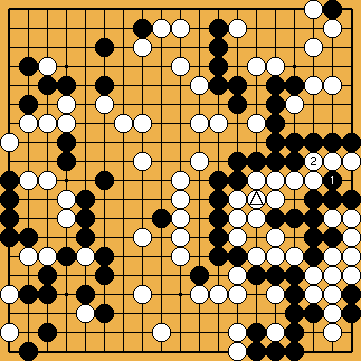
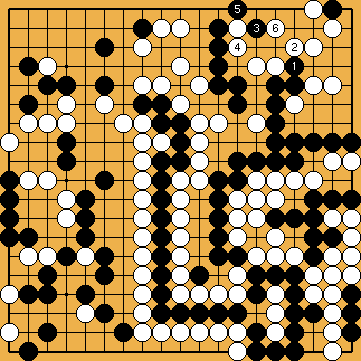
 on only.
on only.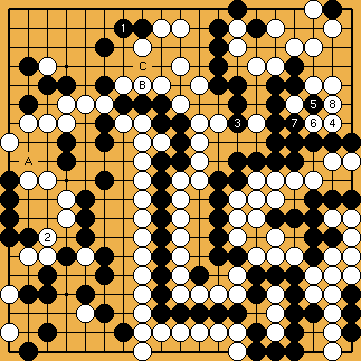
 "Joachim's Ko-Semeai".
"Joachim's Ko-Semeai". ,
, 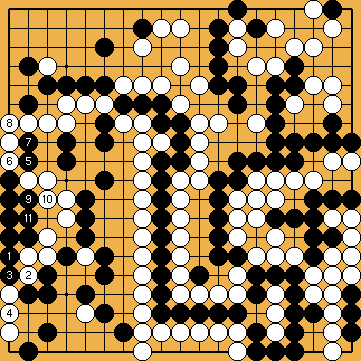
 the "Nakade Sequence". Black builds a nine-stone shape inside White's group on the left edge that will enable one eye for this group only.
the "Nakade Sequence". Black builds a nine-stone shape inside White's group on the left edge that will enable one eye for this group only.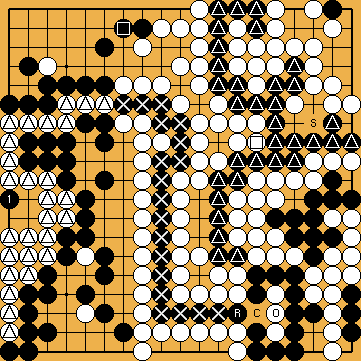
 ) continue taking the liberties of Black's
) continue taking the liberties of Black's  - which will now die. White wins the game with ease.
- which will now die. White wins the game with ease.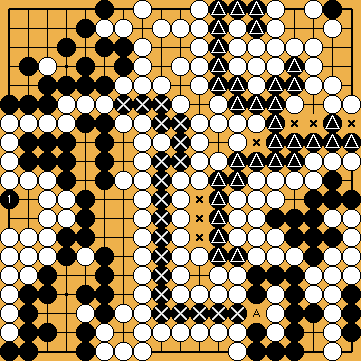
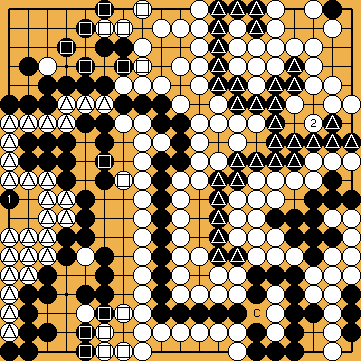
 . Both
. Both